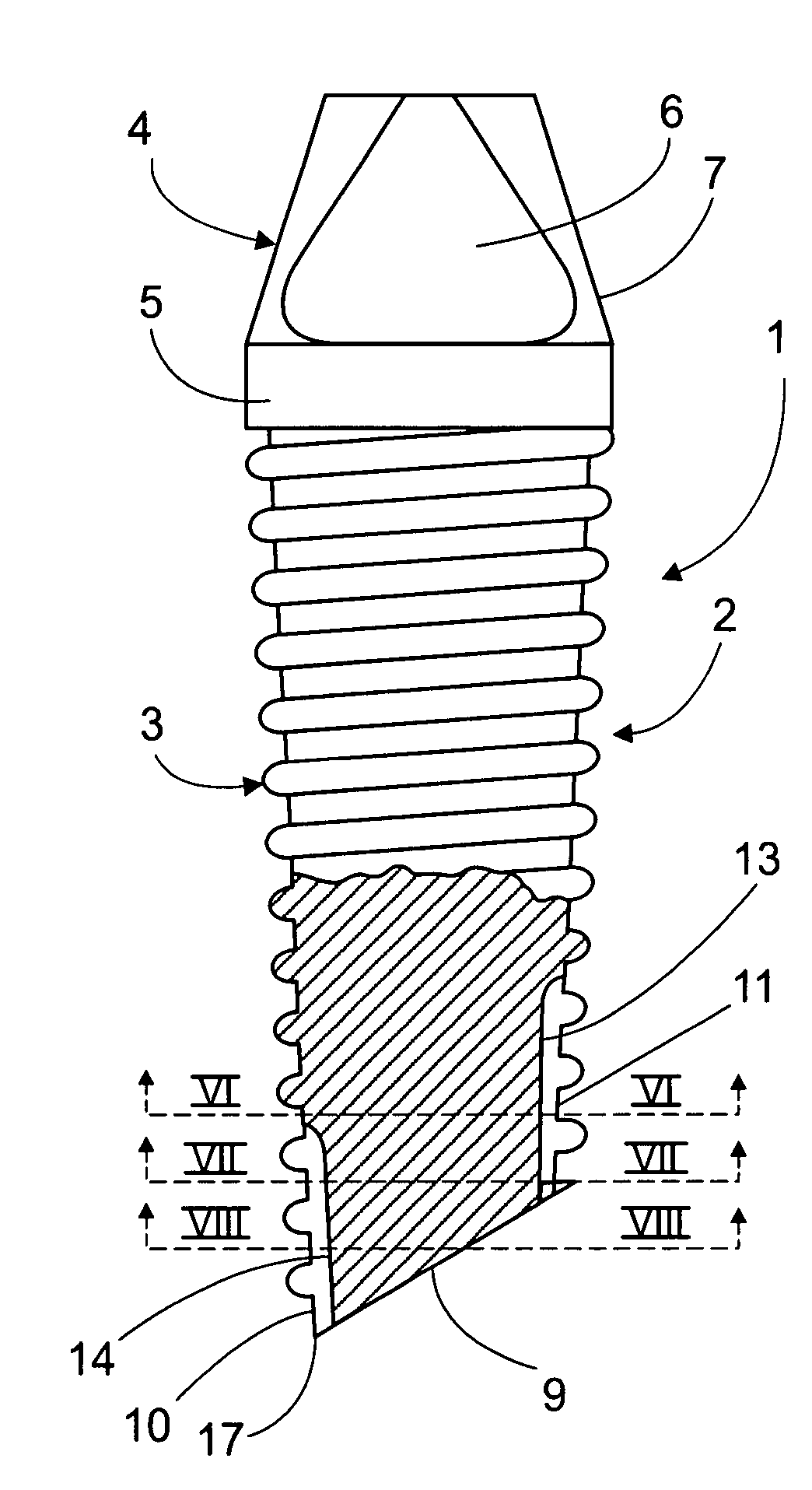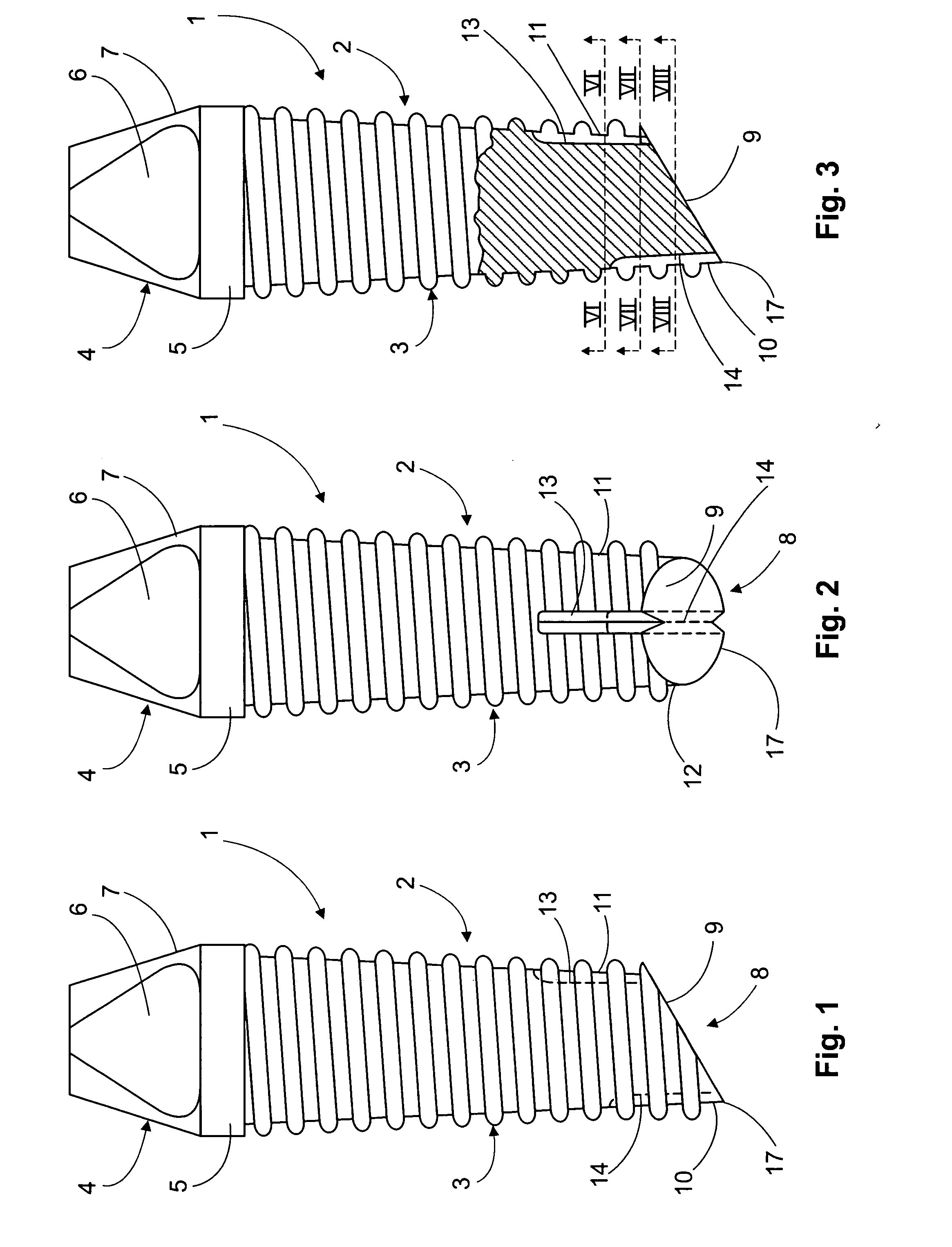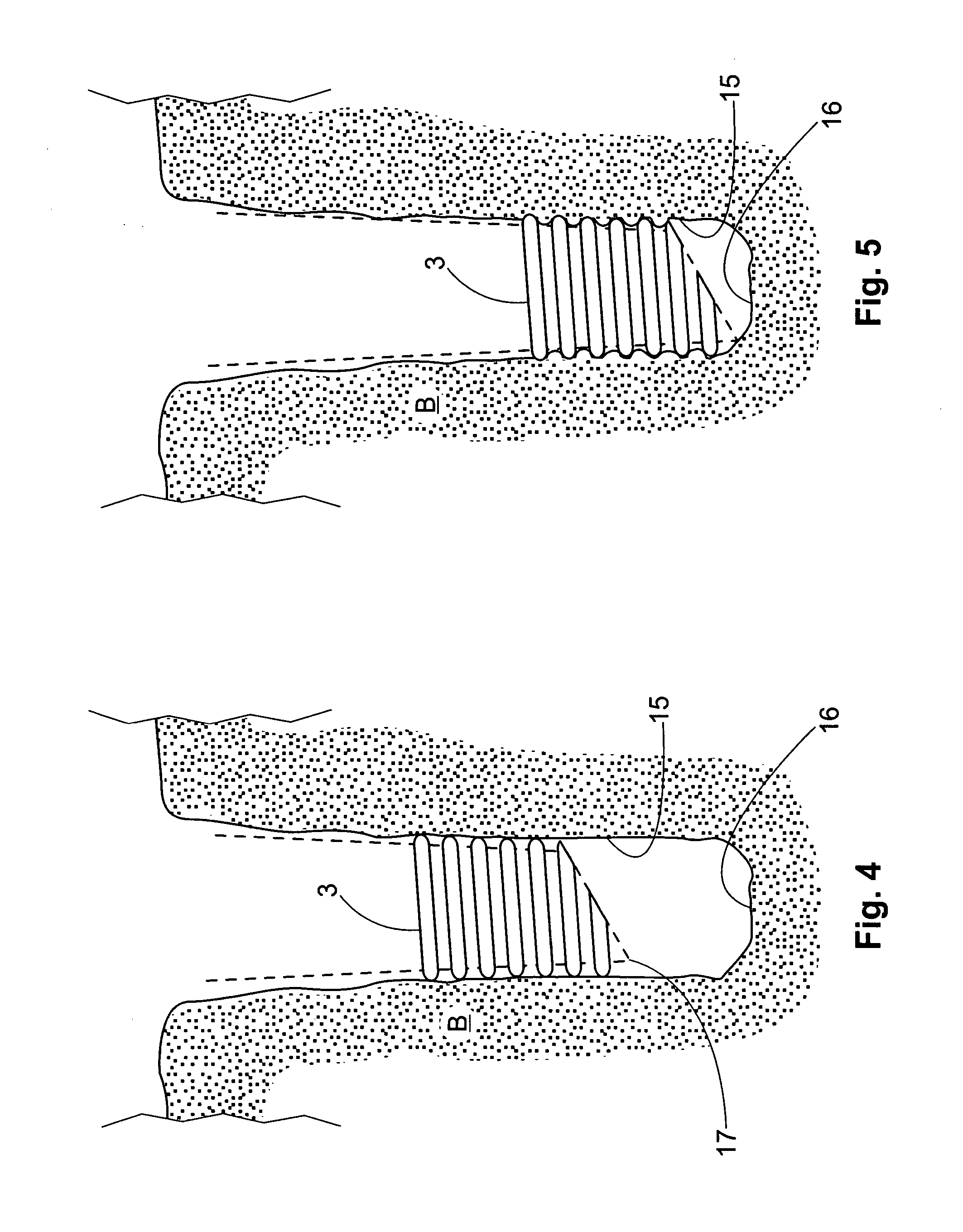Threaded implant with improved distal end
- Summary
- Abstract
- Description
- Claims
- Application Information
AI Technical Summary
Benefits of technology
Problems solved by technology
Method used
Image
Examples
Embodiment Construction
[0028] Now referring in detail to the invention, the dental implant according to the invention comprises an implant body 1 with a root portion 2 generally of a conical or tapered shape including a plurality of threads 3 and a head portion or head 4, preferably having a frustoconical profile as disclosed in U.S. Ser. No. 11 / 012,931 to the same inventor of the present application and the contents of which are included as a reference in the present application. The implant body with its corresponding portions is made preferably of a bio-compatible material, such as a metal, more preferably titanium and most preferably titanium that is chemically treated, for example by an osseous conductive substance, to have an outer surface for promoting the osseous integration of the implant into the patient's bone. Root portion 2 and head portion 4 are preferably separated by a collar portion 5, preferably a cylindrical body portion, free of threads. Threads 3 may be of any convenient and / or desire...
PUM
 Login to View More
Login to View More Abstract
Description
Claims
Application Information
 Login to View More
Login to View More - R&D Engineer
- R&D Manager
- IP Professional
- Industry Leading Data Capabilities
- Powerful AI technology
- Patent DNA Extraction
Browse by: Latest US Patents, China's latest patents, Technical Efficacy Thesaurus, Application Domain, Technology Topic, Popular Technical Reports.
© 2024 PatSnap. All rights reserved.Legal|Privacy policy|Modern Slavery Act Transparency Statement|Sitemap|About US| Contact US: help@patsnap.com










